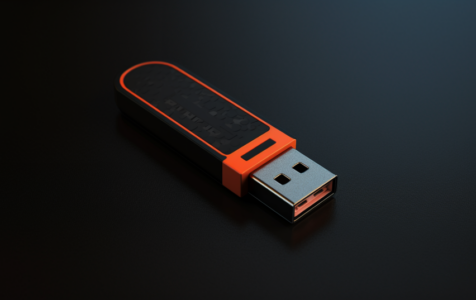USB flash drives, also called thumb drives or memory sticks, are portable devices used for data storage and transfer. They usually come pre-formatted.
Formatting Basics
Formatting prepares a storage device, like a USB flash drive, to store data. This process creates a filing system that organizes your information, allowing for optimal use of storage space. One might reformat a drive when planning to use it with a different operating system or to clear up space. USB drives typically support two primary formatting methods.
Expert Tip: For smoother PC performance, consider using a PC optimization tool. It handles junk files, incorrect settings, and harmful apps. Make sure it's right for your system, and always check the EULA and Privacy Policy.
Special offer. About Outbyte, uninstall instructions, EULA, Privacy Policy.
Common File Systems for USB Flash Drives
USB flash drives predominantly utilize certain specific file systems to manage data storage and access. While tools like Fuse allow for NTFS usage on Mac and HFSExplorer permits HFS usage on PC, users who operate on both Windows and Mac OS might consider partitioning their drives. This means designating separate sections of the drive for each operating system.
How to Format on Windows
- Connect the USB drive to a Windows computer.
- Depending on your OS version:
- For Windows Vista or 7: Click on Start, then Computer.
- For Windows 8 and 8.1: Search for “computer” from the Start menu.
- For Windows 10: Use the search bar from the Start screen and select “This PC.”
- Right-click on the drive icon and select ‘Format’. Make sure to back up any important data, as formatting will erase everything on the drive.
- In the format window, click the drop-down arrow by the file system and select FAT32.
- A warning will appear, indicating data will be deleted. Confirm by clicking OK.
- After formatting is complete, another message will confirm the process. Click OK.
- Close any open windows related to the drive.
- Eject the USB drive before removing it.
How to Format on Mac
- Connect the USB drive to your Mac.
- Open the Disk Utility (accessible through Utilities, Finder, or Applications).
- From the left panel, select the USB drive you want to format. Remember, formatting will delete all the content on the drive, so ensure you’ve backed up essential files.
- Click on the Erase tab.
- In the volume format, select MS-DOS FAT.
- If prompted, enter a disk name and click Erase.
- After completion, click Done.
- Eject the drive before removing it.
USB Drive Types: USB-A vs. USB-C
USB drives come in various connectors. The USB-A is a long-standing standard, commonly found on PCs and laptops. In contrast, USB-C is a more recent innovation with a smaller design and faster data transfer capabilities.
Reformatting a Mac-formatted USB Drive on Windows
If a USB flash drive formatted on a Mac needs reformatting for Windows:
- Plug the drive into a Windows PC.
- If it doesn’t appear under “My Computer”, access Disk Management (via Control Panel or right-clicking “My Computer” and selecting Manage).
- Identify the drive on the list, right-click its volume, and select ‘Format’.
- Choose your desired file system. If necessary, delete prior volumes on the drive. Ensure data backup as all data will be lost.
- Alternatively, if the drive appears under “My Computer”, right-click and select Format.
Armed with these steps, you can maintain the optimal performance of your USB drives, ensuring data security and compatibility across various operating systems.
FAQ
Q: Why might I need to reformat my USB flash drive?
A: Reformatting is usually done to erase data, ensure compatibility with another OS, or free up additional space.
Q: Which file systems are common for USB flash drives?
A: NTFS, HFS, and FAT32 are common, with FAT32 often used for formatting.
Q: How can I format a USB drive on Windows 10?
A: Connect the drive, search “This PC” from Start, right-click the drive icon, and proceed with formatting.
Q: How do USB-A and USB-C differ?
A: USB-A is a traditional connector, whereas USB-C is a more recent, compact design with quicker data transfer.
Q: I formatted my USB on Mac; can I use it on Windows?
A: Yes, but you might need to reformat it for full compatibility. If the drive doesn’t appear in “My Computer”, you can reformat it using Disk Management or directly through “My Computer”. Ensure you have backed up any important data before reformatting.
Q: Does formatting erase all data on the USB drive?
A: Yes, formatting will delete all data on the drive. Always ensure you have a backup of important files before proceeding.
